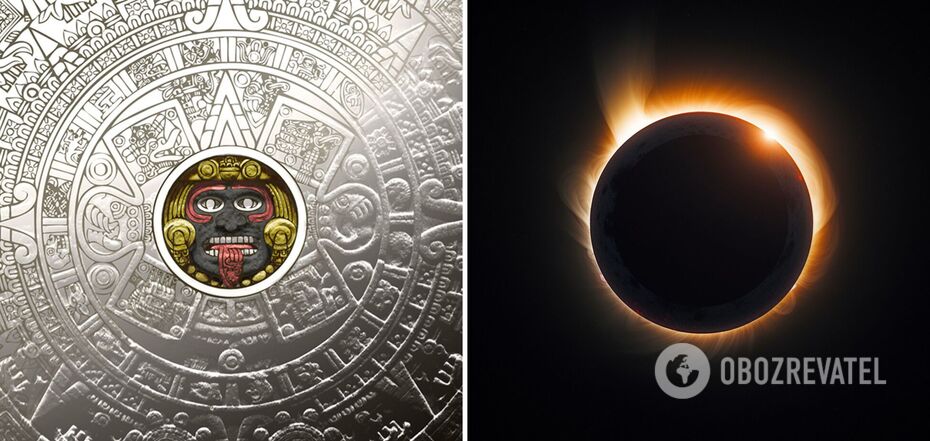Life
Aztec Stone of the Sun turned out to be a harbinger of the end of the world: it has clues how to save
Researchers of one of the most important artifacts of the Aztec Empire, a 24-ton basalt calendar, believe that the center of the stone depicts the death of the sun god Tonatiu during a blackout. To avert the end of the world, human sacrifices were performed directly on the stone.
This is according to a new study published in the journal Mexicon. The author of the study was the curator of Latin American art and archaeology at the Museum of Natural History of Florida (USA), Susan Milbrat.
The sinister stone was used by the Aztecs before the Spanish colonized the region in the 1520s, assimilating the natives. The stone, more than 3.6 meters in diameter, was buried face down. It was not unearthed until 1790.
Today, the stone is preserved in the National Museum of Anthropology in Mexico City, and a copy is on display in the courtyard of Dickinson Hall on the University of Florida campus.
Milbrath says that both the Aztecs and Mayans tracked the movement of the sun to anticipate future events, particularly the weather or astronomical cycles. When they began to observe regular eclipses, however, this occupied an important place in their religion.
Since the Aztecs relied heavily on agriculture, the importance of the Sun was very important to them. This is probably why there was a tradition in their faith of drinking the Sun with the blood of human sacrifices, prolonging its life.
The sacrifices were offered on the day of the 4th of Olin when the Aztecs believed the world would end. This date was repeated every 260 days. But, as Milbrat notes, the priests who kept track of eclipse schedules could know that an eclipse would not occur on that particular day for a very long time. According to the Aztec calendar, a solar eclipse would not occur on this date until the 21st century.
"In creating their mythology, they made sure that Olin 4 never coincided with the blackout," the scholar believes.
Milbrath also tells us that Tonatiu was usually depicted as a blue and red figure framed in yellow. These colors are often used in Aztec paintings depicting him as a living god.
But some evidence suggests that the image of Tonatiu may not have been colored or colored black, like the sun during an eclipse. The tongue of the deity on the stone was represented by a knife sticking out of his mouth. Both the black color and the knife were symbols of death.
Also, Tonatiu was surrounded by claws clutching human hearts, alluding to the monster of the eclipse.
In addition, a circle of signs symbolizing the 260-day calendar was inscribed on the stone. The outer ring of the stone also depicted fiery serpents with open mouths, flames on their bodies, and starry muzzles, representing the constellation closely associated with the Sun in the dry season.
According to Milbrath, the Aztecs were probably trying to defy and fight the forces they believed were destroying the Sun during an eclipse.
"Most of the details of how the Aztecs dealt with solar eclipses are little known, but they certainly tried to ward off the monster that they believed was eating the Sun," the scientist noted.
Earlier OBOZREVATEL also told that a supercomputer calculated the date of the end of the world.
Subscribe to OBOZREVATEL channels on Telegram and Viber to keep up with the latest events.



























